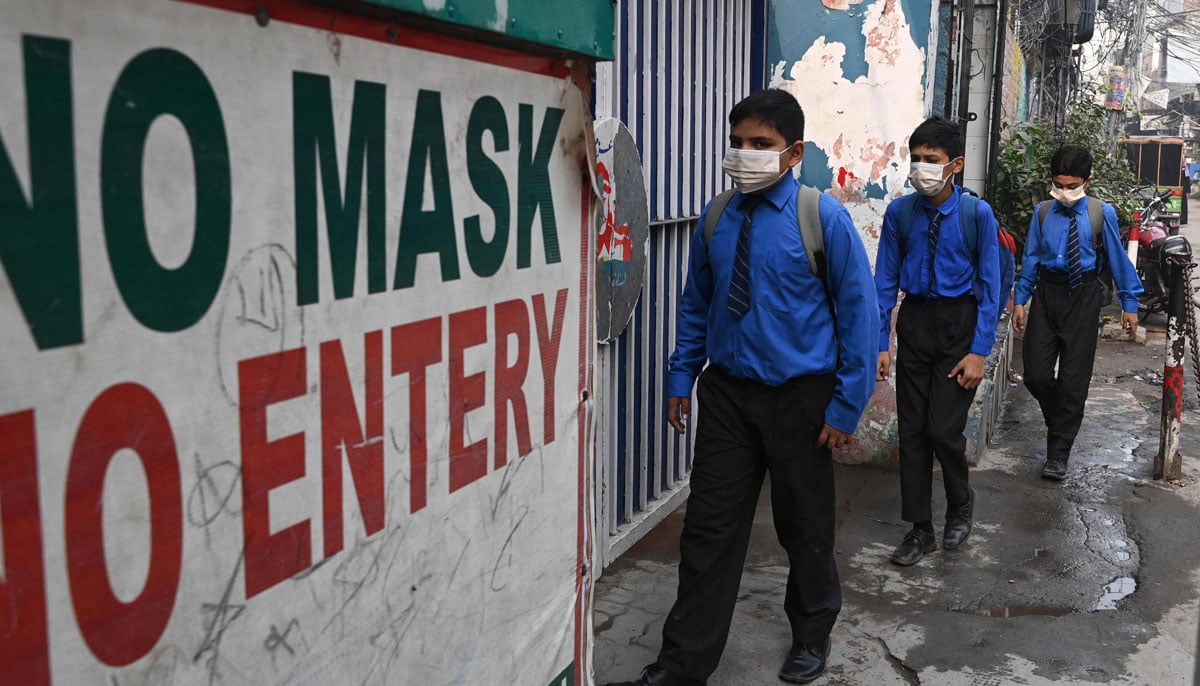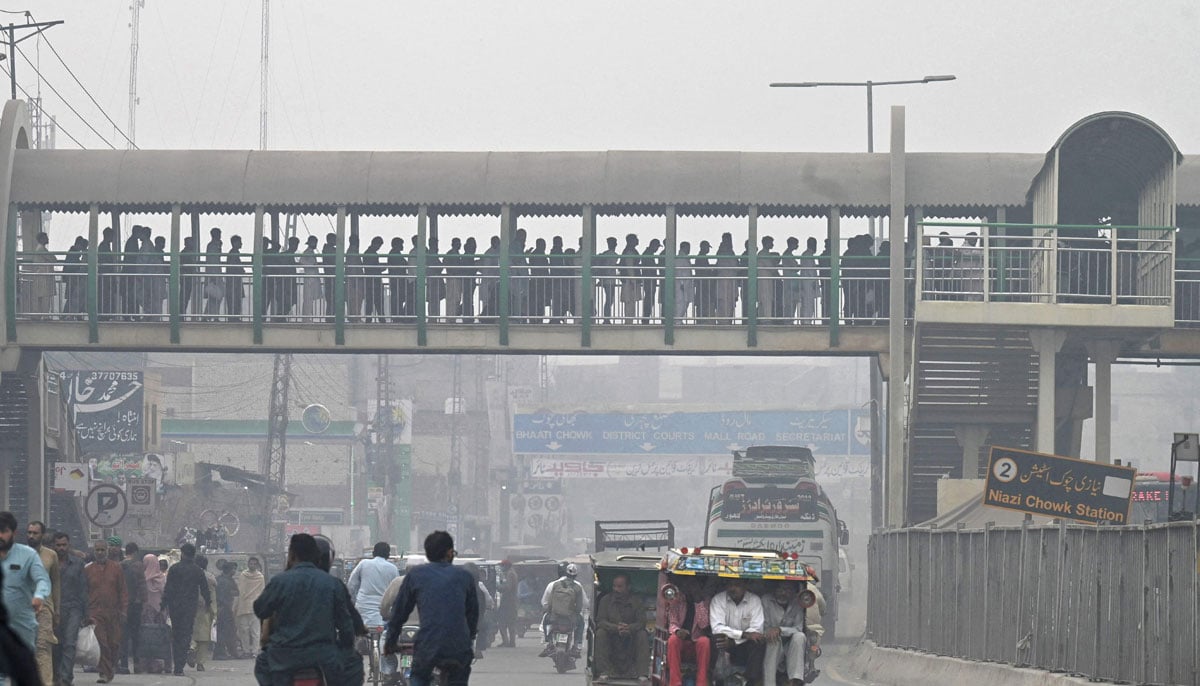Vehicular Emissions: Devil of Pakistan’s air pollution lies in exhaust-ing details
Pakistan's urban air pollution challenge is multifaceted, and understanding nuances of its sources is crucial for effective policy-making

Pakistan's urban areas have been grappling with one of the world's most significant air pollution challenges. Pakistan’s air quality is currently ranked as the worst (180 out of 180) in the world. This crisis has a profound impact on public health and the nation's economy.
The current smog episode which is aggravated by biomass residue burning takes away the focus from a major contributor to urban and sub-urban air pollution all year around namely, vehicular pollution.
There is, however, uncertainty about the extent and nature of transport’s contributions to air pollution, with estimates varying from 5% to over 80%. Such uncertainty can complicate the formulation of effective policies that are needed to combat air pollution.

A review of air pollution source apportionment studies (studies that identify the share of pollutant sources, for example, agricultural vs industrial vs transport conducted in Pakistan’s urban areas over the past two decades was recently published in the journal Air [1].
The article highlights the contributions of pollutants from different vehicle classes, compares pollution share estimates for the transport sector, and discusses the strengths and weaknesses of different investigation methods. Some key findings and recommendations are summarised here.
Vehicular emissions
Pakistan’s urban road traffic makeup, similar to that of other South Asian cities, is heterogeneous, as can be seen in Figure 1, which shows vehicle sales data for the year 2021–2022. The urban automotive fleet is dominated by 2/3 wheelers (motorcycles, scooters, autorickshaws, and “loaders”) that makeup around 87% of the total fleet.
![Figure 1. Annual sales of vehicles in Pakistan from 2021–2022. The data do not include imported vehicles and vehicles from manufacturing that are not part of Pakistan Automotive Manufacturers Association. Tractor sales have been excluded. Figure reproduced from [1]](https://www.geo.tv/assets/uploads/updates/2023-11-20/519663_6978410_updates.jpg)
This is followed by cars (10.9%) that are powered by four-stroke engines, and fuelled predominantly by petrol and diesel, with a notable tertiary share of petrol engines retrofitted to run on CNG.
Light Commercial Vehicles (vans, pick-up trucks, and SUVs) and Heavy-Duty Vehicles (trucks and buses) make up the remaining 2.4% of the fleet. They are powered by diesel four-stroke engines for high-power applications and by petrol or CNG four-stroke engines for lower-power uses.
Two- and three-wheelers are the major source of vehicular pollution – in part because of their sheer number and in part because of the engines that power them. These engines are almost always carburetted (as opposed to having a fuel injection system) and are based on the two-stroke cycle.
![Figure 2. Total engine capacity of different vehicle classes calculated from sales data for 2021–2022 by assuming average engine capacity values of: 1077 cc for cars, 7000 cc for trucks, 8000 cc for busses, 1818 cc for LCVs, 88 cc for 2/3 wheelers. Figure reproduced from [1]](https://www.geo.tv/assets/uploads/updates/2023-11-20/519663_7356531_updates.jpg)
The net effect is limited control over the composition of the mixture that is combusted, poor air-fuel mixing, and burning of lube oil – all of which contribute significantly to air pollution.
It is worth noting that even though two- and three-wheelers make up over 80% of the total fleet by numbers if their engine capacity (“CCs”) is factored in, their share drops to around 30% (Figure 2). However, because of their engine designs, they still end up being the largest transport contributor to air pollution.
![Figure 3. Estimated relative emissions of different vehicle classes in Pakistan taking cars as the baseline and assuming the following relative emissions factors for other vehicle classes: HDV 1.2–1.5, LCV 1–1.3, 2/3 wheelers 1.75–3. Figure reproduced from [1]](https://www.geo.tv/assets/uploads/updates/2023-11-20/519663_9390611_updates.jpg)
This is shown in Figure 3 based on the likely range of the relative emissions factors of two- and three-wheelers, i.e. how much pollution they produce compared to cars.
Other factors contributing to high vehicular emissions include high sulphur content in fuel (especially diesel), poorly tuned and maintained engines, and the absence of strict emissions regulations (Table 1). Replacing the current Euro 2 emissions and fuel regulations with modern standards can help address some of these challenges.
This will not only directly reduce emissions of sulphur dioxide but will also enable the use of emissions after-treatment technologies like three-way catalysts and particulate filters that can substantially lower emissions of carbon monoxide, nitrogen oxides, volatile organic compounds, and particulate matter.
Enhancing fuel quality standards to Euro 5 by 2025 and Euro 6 by 2030 was declared the highest priority for reducing air pollutants from the transport sector by the previous federal government as a part of the National Clean Air Policy.
| Engine Type | Problems (Likely causes) | Vehicles |
| Petrol (DI) | Inadequate after-treatment | Some cars and SUVs |
| Petrol (IDI, carburetted) | High CO (stoichiometric/rich combustion and potentially poor mixing), lacking after-treatment | Most cars and autorickshaws, majority of motorcycles |
| Diesel | High SO2 and PM (poor mixing and high-sulphur fuel), lacking after-treatment | Heavy-duty vehicles, some light-duty vehicles |
| 2SC (Carburetted) | High VOCs, CO, PM, and SO2 (poor mixing, lube oil combustion, and indirect fuel metering), lacking after-treatment | Old motorcycles and autorickshaws |
| CNG | High CO (stoichiometric/rich combustion) Higher NO than petrol vehicles, lacking after-treatment | Light-duty vehicles and buses |
Table 1. Summary of notable pollution-related problems across different engine types used in Pakistan’s automotive fleet. DI: direct injection, IDI: indirect injection.
Source apportionment studies
In regard to source apportionment studies, it is important to distinguish between the goals and scope of “top-down” receptor-based studies that assay pollutant samples from the air to estimate its various sources, and “bottom-up” sectoral inventories that estimate different sectors’ pollution shares based on their activity and emissions intensity.
For ascribing pollution source shares, receptor-based studies are better suited as they use directly measured emissions data. The accuracy of sectoral inventory estimates is limited by the reliability of the underlying assumptions, most notably that of the emissions factors, which index the pollution potential of different technologies.
Emissions factors currently being used for sectoral inventories have not been developed and calibrated for Pakistan's energy systems and thus might not be representative of local realities. Therefore, the choice of emissions factors should be critically analysed, and indigenous factors should be developed.

A tiered approach of periodically conducting high and low-cost studies can provide a practical mechanism for monitoring air pollution and evaluating the effects of policy interventions. High-fidelity top-down studies can help develop granulated emissions profiles of different urban centres and lay the foundation for more economical, bottom-up investigations that could be carried out more frequently.
While reporting sectoral air pollution shares, differences in the relative risk potential of various pollutant species should be accounted for as not all pollutants are equally damaging to the health and environment. In the Pakistani context, PM2.5 has been identified as the most problematic species, both in terms of disease burden and prevalence. PM2.5 refers to emissions of small solid or semi-solid particles that are less than 2.5 microns in diameter.
These particles are particularly harmful to human health because of their small size which allows them to penetrate deeper into the respiratory system and seep into the bloodstream. Quantitative health impact and burden of disease assessments can also help understand the health costs associated with transport-related pollution exposures by estimating the health burdens from different sectors and reporting their shares as premature deaths.
In conclusion, Pakistan's urban air pollution challenge is a multifaceted issue, and understanding the nuances of its sources is crucial for effective policy-making. The recommendations put forth in the review can help develop a roadmap for addressing the air quality challenges in Pakistan and hopefully support efforts to provide cleaner, breathable air for its dwellers.
Hassan Aftab Sheikh is a PhD in Earth Sciences from the University of Cambridge. He posts @hassanaftabs
Abdullah Umair Bajwa is an adjunct faculty member at the Lahore University of Management Sciences' (LUMS) Syed Babar Ali School of Science and Engineering. He can reached at [email protected]
Disclaimer: The viewpoints expressed in this piece are the writer's own and don't necessarily reflect Geo.tv's editorial policy.





